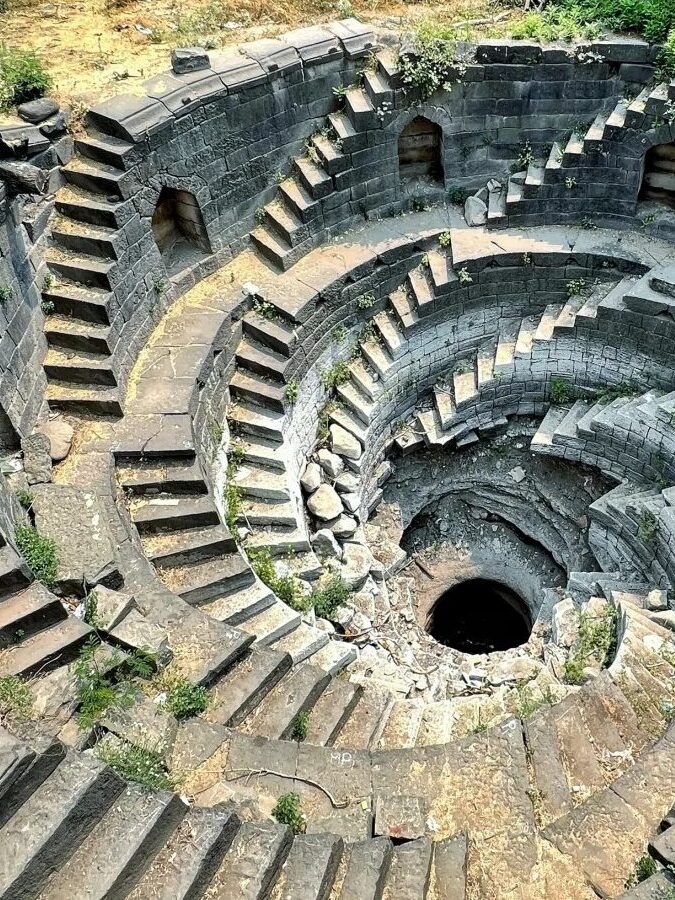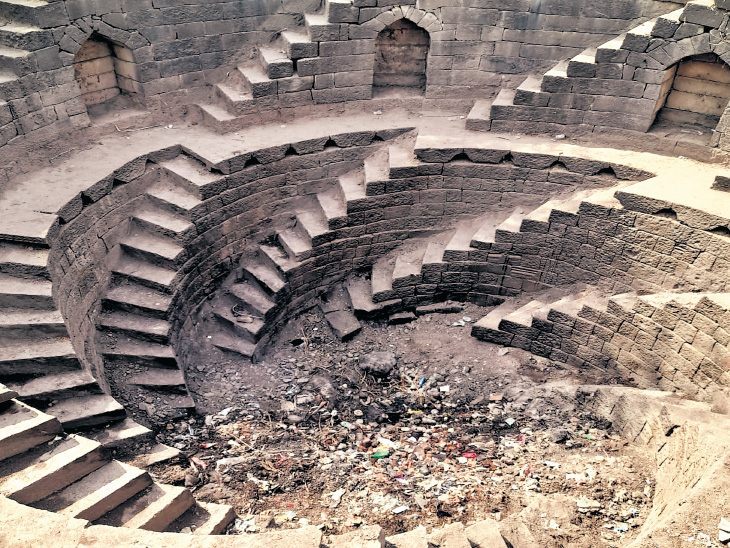The helical stepwell of Walur, located in Selu Taluka, Parbhani District, Maharashtra, stands as a magnificent testament to ancient Indian engineering and artistry. This 1,000–1,500-year-old structure not only demonstrates remarkable architectural skill but also reflects the ingenuity of its creators in designing a functional and aesthetically pleasing water reservoir.
A Unique Spiral Design
The most striking feature of the Walur stepwell is its unique spiral design, a rarity among Indian stepwells. The structure comprises eight interconnected staircases, which lead to a central well, creating a helical, or spiral, formation. This innovative design not only maximizes the space but also offers a visually captivating experience. Visitors descending the staircases are immersed in the grandeur of its layout, which stands out as a marvel of ancient engineering.

Cultural and Artistic Significance
In addition to its architectural uniqueness, the Walur stepwell is adorned with eight Devakoshta niches. These niches likely housed intricate carvings or sculptures, reflecting the artistic and spiritual values of the time. The presence of such niches emphasizes the dual function of the stepwell as not only a utilitarian water source but also a site of rituals and social interactions. The stepwell would have served as a communal gathering place for villagers, combining functionality with religious and cultural significance.

A Dual Purpose: Water Source and Community Space
The stepwell was primarily designed to serve as a vital water source in arid conditions, providing much-needed water to the local community. However, it also functioned as a space for communal rituals and social gatherings. Its design allowed people to descend gradually, enabling access to water even during the dry season, and its central location made it a hub for community life.

Restoration Efforts and Preservation
In recent years, local villagers have taken significant steps to restore the stepwell. The restoration efforts focused on clearing debris and uncovering the stepwell’s grandeur, allowing its historical and architectural beauty to shine once again. This initiative not only highlights the importance of preserving such heritage sites but also underscores the potential of the Walur stepwell as a site for historical and cultural tourism.
A Significant Addition to India’s Heritage Sites
The Walur stepwell holds a distinct position in India’s rich heritage of stepwells, paralleling renowned sites such as Rani-ki-Vav in Gujarat and Agrasen Ki Baoli in Delhi. Its spiral structure and intricate design make it a uniquely significant site. The Walur stepwell, blending engineering ingenuity with artistic elegance, stands as a testament to India’s rich cultural and architectural history, offering a glimpse into the ingenuity of ancient Indian civilization.

